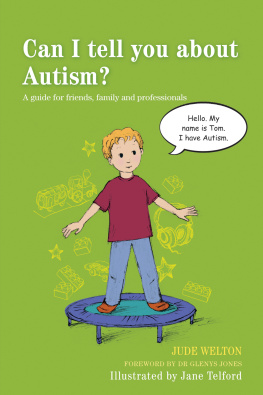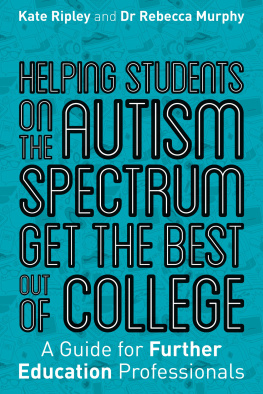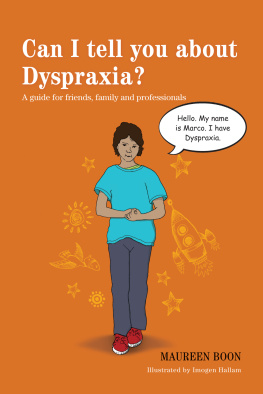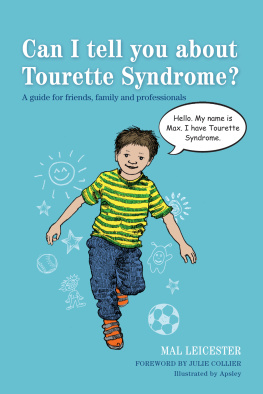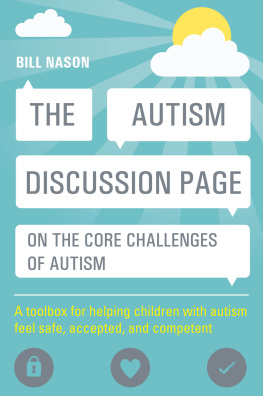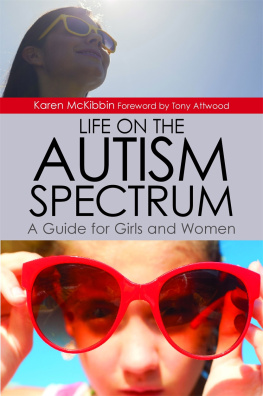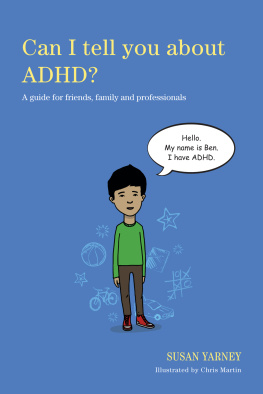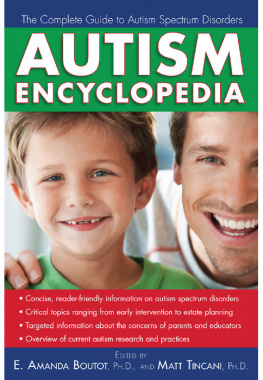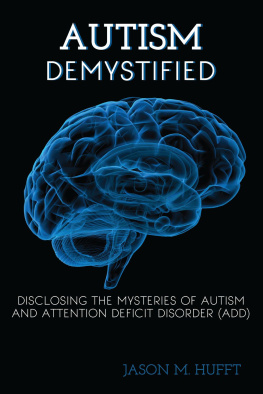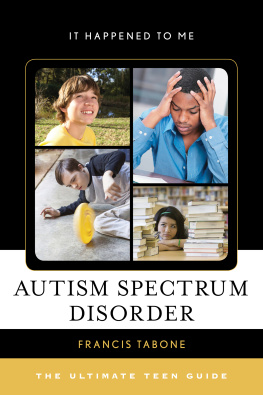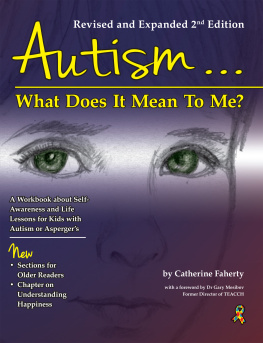First published in 2014
by Jessica Kingsley Publishers
73 Collier Street
London N1 9BE, UK
and
400 Market Street, Suite 400
Philadelphia, PA 19106, USA
www.jkp.com
Copyright Jude Welton 2014
Illustrations copyright Jane Telford 2014
Foreword copyright Glenys Jones 2014
All rights reserved. No part of this publication may be reproduced in any material form (including photocopying or storing it in any medium by electronic means and whether or not transiently or incidentally to some other use of this publication) without the written permission of the copyright owner except in accordance with the provisions of the Copyright, Designs and Patents Act 1988 or under the terms of a licence issued by the Copyright Licensing Agency Ltd, Saffron House, 610 Kirby Street, London EC1N 8TS. Applications for the copyright owners written permission to reproduce any part of this publication should be addressed to the publisher.
Warning: The doing of an unauthorised act in relation to a copyright work may result in both a civil claim for damages and criminal prosecution.
Library of Congress Cataloging in Publication Data
Welton, Jude, author.
Can I tell you about autism? : a guide for friends, family
and professionals / Jude Welton ; foreword by
Glenys Jones ; illustrated by Jane Telford.
pages cm. -- (Can I tell you about--?)
Audience: Ages 7+
Includes bibliographical references.
ISBN 978-1-84905-453-9 (alk. paper)
1. Autism in children--Juvenile literature. I. Telford,
Jane, illustrator. II. Title. III. Series: Can I tell you
about-- ? series.
RJ506.A9W442 2014
618.9285882--dc23
2013048193
British Library Cataloguing in Publication Data
A CIP catalogue record for this book is available from the British Library
ISBN 978 1 84905 453 9
eISBN 978 0 85700 829 9
Can I tell you about Autism?
Can I tell you about Autism?
A guide for friends, family and professionals
JUDE WELTON
Foreword by Dr Glenys Jones
Illustrated by Jane Telford

Jessica Kingsley Publishers
London and Philadelphia
Can I tell you about...?
The Can I tell you about...? series offers simple introductions to a range of limiting conditions and other issues that affect our lives. Friendly characters invite readers to learn about their experiences, the challenges they face, and how they would like to be helped and supported. These books serve as excellent starting points for family and classroom discussions.
Other subjects covered in the Can I tell you about? series
ADHD
Adoption
Asperger Syndrome
Asthma
Cerebral Palsy
Dementia
Diabetes (Type 1)
Dyslexia
Dyspraxia
Epilepsy
ME/Chronic Fatigue Syndrome
OCD
Parkinsons Disease
Selective Mutism
Stammering/Stuttering
Tourette Syndrome
Foreword
Until recently, much of the literature has focused on sharing the diagnosis with parents and carers. Relatively little attention has been given to explaining the diagnosis to the child. Accounts from adults with autism and Asperger syndrome have suggested that being told their diagnosis is largely positive and beneficial. They report that this helps to make sense of themselves and to understand the behaviour of others, and enables them to develop strategies to manage situations they find problematic. Sharing the diagnosis also allows individuals to access relevant literature and to make contact with others with autism or Asperger syndrome. Those who feel confident and positive about their diagnosis are likely to fare better than those who know little or who have a negative view of autism.
This book is therefore very welcome, as it adds to the literature on the topic and provides a framework to use when discussing the diagnosis of autism with a child. The age at which the diagnosis should be shared is often debated and some professionals have said that it is easier to share the diagnosis when children are younger in the primary years than when they are teenagers or adults. This book is written for the younger age group. The first part is written as if it is spoken by Tom, a child with autism, explaining what he does and why. The second part is written for parents, carers and professionals and gives strategies, ideas and resources which may be helpful.
This book could also be used to help other children brothers and sisters or classmates to understand autism. For both areas of work, it is essential that the parents have given their consent and that the child is also willing and ready to be involved and/or to share the diagnosis with other children. This is skilled and sensitive work. Teaching staff and other practitioners should always shadow a person who has already done this type of work successfully, until they are confident they have the skills and understanding to do this themselves. In addition, it would be very useful to use some examples of what the child concerned does or says (to add to or replace some of the issues experienced by Tom).
A key element of this work be it sharing the diagnosis with the child or raising peer awareness of autism is that a positive picture of the child and of autism is promoted. In addition, it is important to demonstrate that there are good reasons why the child acts as he or she does, which then underpin and justify the reasons why adjustments need to be made at home and at school to support the child and enhance his or her well-being and self-esteem.
Dr Glenys Jones
Chartered Psychologist
Autism Centre for Education and Research
University of Birmingham
Introduction for adults
This book has been written to help both children and adults understand what its like to have autism. It is written in two voices Toms and mine. The words in the first section are written as if spoken by Tom, as if he is telling you about his autism. The second part of the book is written in my adult voice, for adults: it gives information, and suggests ideas and strategies that can help a child with autism.
Since you are reading this book, you probably know someone with autism, and probably realise that a young child with autism would not have the insights into autism that Tom expresses, or use language in the way Tom does. Unlike Tom, you probably have the ability to think flexibly, use your imagination and knowingly suspend disbelief. So I would ask you to do just that and listen to the words that Tom might tell you if he could.
I would also ask you to point out to any children reading this book that Tom wouldnt really use words in the way he does in this book. Please suggest that they start by reading the Introduction for children on the next page.
Autism is caused by differences in the way the brain develops, and although it is a lifelong condition, it changes over time. With the right support, many people with autism can improve their communication skills and come to enjoy friendships whether they are able or whether they have whats sometimes called classic autism, with its associated learning difficulties. Theres no one-size-fits-all way to help, but I hope that an understanding of some of the ideas and strategies in this book will help you to help the children you know.
Introduction for children
Meet Tom a young boy with autism.
Tom will tell you what it feels like to have autism. Hell tell you what he likes and what he doesnt like. Hell tell you things that make life easier or more difficult for him and the ways in which other people might help him.
A child with autism would not usually talk in the way Tom does but these are the sorts of things Tom might tell you if he could.
Next page
